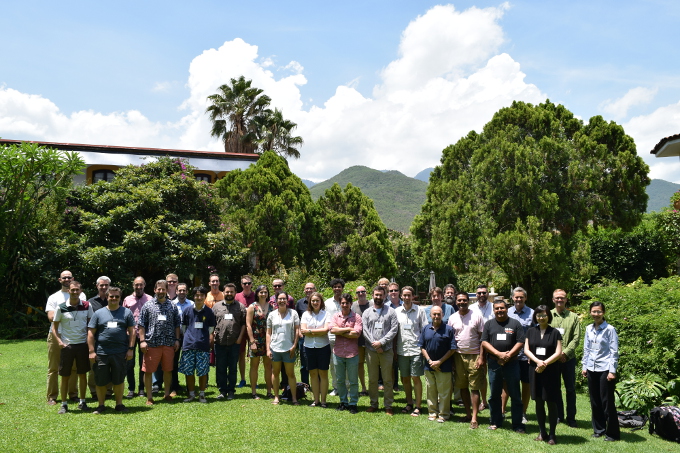Computing the Universe: At the Intersection of Computer Science and Cosmology (16w5163)
Organizers
Arif Badul (University of Victoria)
Andrew Benson (Carnegie Institution for Science)
Fabrice Durier (University of Arizona)
George Lake (Institute for Theoretical Physics, University of Zurich)
Norman Murray (University of Toronto)
Thomas Quinn (University of Washington)
James Wadsley (McMaster University)
Description
The Casa Matemática Oaxaca (CMO) will host the "Computing the Universe: At the Intersection of Computer Science and Cosmology" workshop from June 5th to June 10th, 2016.
Observations inform us that the universe emerged from the fires of Big Bang, nearly 14 billion years ago, in an exceedingly smooth and homogenous state. And yet, gazing out at the Cosmos today, we see a highly organized universe in which matter is spun into rich web-like chains of galaxies, occasionally punctuated by massive dynamic swarms of up to a thousand bright galaxies held together by their mutual gravity, all woven around giant empty voids millions of light-years across. Explaining the transition from its smooth beginnings to today's highly organized Universe is one of the Grand Challenges of contemporary cosmology.
To address this grand challenge, to understand how the various components (gas, dark matter, galaxies and stars) mix and give rise to the observed cosmic sculptures, cosmologists use powerful supercomputers to reconstruct the evolution of the universe's from its infancy to today, a period spanning some 14 billion years. However, the sheer number of physical processes is so large and the weft and warp that results from their intermingling so complex that raw computing power by itself is not enough. "Computing the Universe" requires innovative new computational techniques and algorithms as well. Now a series of new developments have positioned the field at the cusp of a renaissance. This workshop will bring together some of the world's leading computational cosmologists to assess the new developments and to find new synergies to leverage. Our aim is to spark the next great leap forward.
The Casa Matemática Oaxaca (CMO) in Mexico, and the Banff International Research Station for Mathematical Innovation and Discovery (BIRS) in Banff, are collaborative Canada-US-Mexico ventures that provide an environment for creative interaction as well as the exchange of ideas, knowledge, and methods within the Mathematical Sciences, with related disciplines and with industry.
The research station in Banff is supported by Canada's Natural Science and Engineering Research Council (NSERC), the U.S. National Science Foundation (NSF), Alberta's Advanced Education and Technology, and Mexico's Consejo Nacional de Ciencia y Tecnología (CONACYT). The research station in Oaxaca is funded by CONACYT.






